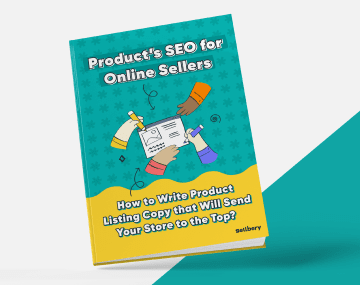
Boost sales with multichannel marketing and social commerce. Learn how to optimize your strategy for increased customer engagement and efficient sales.
Multichannel marketing means selling across multiple platforms. This could include your website, online marketplaces, email, and social media.
The goal is to reach more people in more places. But being present doesn’t mean being effective. That’s where social commerce starts to change the game.
Social commerce is the act of selling directly through social platforms. It turns likes, comments, and shares into sales.
People see a product in a TikTok video or an Instagram Reel and buy it right there. They don’t leave the app. That simplicity matters. It shortens the journey from interest to purchase.
When these two strategies meet, brands start to win big. They’re not just shouting into the void across channels. They’re giving people a way to shop that feels natural. You meet buyers where they scroll.
And you make sure everything behind the scenes—inventory, product data, updates—is synced and working. The hard part is making it feel effortless to the customer.
The mix works best when it’s built on consistency. Customers should see the same product details, prices, and promotions no matter where they look.
That helps build trust and reduces friction. If they spot your ad on Instagram and head to your site later, they should find the same thing. If they decide to buy on Facebook instead, it should be just as smooth.
Why Every eCommerce Brand Should Take Social Commerce Seriously
People aren’t just browsing social media anymore. They’re shopping. Instagram Shops, Facebook Marketplace, TikTok Shop—these aren’t just gimmicks.
They’re full-blown storefronts. And they’re catching fire fast, especially with younger shoppers.
Many buyers now start their journey on social media. They’re not searching Google for “red shoes” anymore. They’re seeing them on someone’s feed, tagged and ready to buy. That changes everything. If your store isn’t ready for that shift, you’re missing out.
It’s not only about trends or being modern. It’s about being easy to buy from. When a shopper clicks a post and gets taken to a confusing site or broken product page, they bounce. Social commerce fixes that. It lets people shop right where they are. Fast. No redirects, no extra steps.
The trust factor is also stronger. Products shown in real-life content tend to convert better than polished ads. People believe people.
So when your brand shows up in a natural way—through influencers, tagged posts, or even your own stories—it feels more real. It doesn’t feel like selling. That’s the sweet spot.
Brands that get this right aren’t just pushing products. They’re creating moments. A scroll turns into a sale without feeling forced.
That’s how social commerce fits perfectly into multichannel strategies. It fills the gap between marketing and actual selling.
How to Build a Strong Social Commerce Strategy
The first step is knowing where your buyers are. Not every social platform is the same. Selling tech gadgets on Pinterest won’t work as well as Instagram or YouTube.
A brand that sells skincare might crush it on TikTok but struggle on LinkedIn. Focus your time where people are already looking for products like yours.
Then it’s time to clean up your product listings. Everything from images to descriptions should be sharp and clear. You can’t rely on people to click through for more info. You have to give it all upfront, within the post. Every platform has its own rules, so tweak your listings for each one. It’s extra work, but it’s worth it.
One big headache is keeping your inventory synced. Say someone buys your last item on Etsy—but your Facebook Shop still shows it’s in stock. That leads to canceled orders, bad reviews, and lost trust.
That’s where automation comes in. Using tools like Sellbery, brands can sync inventory across all channels, including social. That makes sure everything stays accurate, no matter where people shop.
Creating content that works on each platform is another key piece. It’s not enough to post the same photo everywhere. Instagram Reels, TikToks, carousels, and live streams all work differently. You need to post in the format that feels natural for the platform.
And don’t forget product tags. They turn your content into a storefront.
This is also a good time to mention that tools matter.
You can use social scheduling tools, analytics dashboards, and feed management platforms to keep things tight. It helps keep your brand looking consistent without having to manually update things every time you add a new product.
Also, think about credibility. Some brands choose to buy YouTube views when launching a new product demo to help push it out further.
While that’s not a replacement for strong content, it can help spark momentum, especially early on. The goal is to get seen—then let your product do the rest.
How to Track What’s Working and What’s Not
Once everything’s running, you can’t just set it and forget it. You need to know if people are actually buying from your social content. Start by tracking conversion rates on each platform. See where people are clicking, where they’re dropping off, and what they’re actually buying.
Some posts will bring in likes but no sales. Others will quietly move product without much attention. That’s fine. The goal isn’t always going viral. It’s about knowing what drives real buying behavior. Use pixels from Meta and TikTok to help with this. Set up UTM links if you’re sending traffic to your site. Track everything you can.
Don’t just rely on vanity metrics. Shares and comments feel good, but sales matter more. If something looks good but isn’t driving sales, tweak it. Try different product photos, captions, or timing. Social commerce moves fast, but it rewards brands that test and adjust.
One of the best things a brand can do is connect all these dots. That’s where having everything synced makes life easier. One dashboard that shows your listings, inventory, and performance across every platform gives you a clearer view. You’ll know what’s working and where to focus next.
Want a hand keeping everything running across social, marketplaces, and your store? Sellbery helps sync your products and inventory across every channel you care about. That means less chaos and more selling—wherever your customers are.
Was this news helpful?






 Yes, great stuff!
Yes, great stuff! I’m not sure
I’m not sure No, doesn’t relate
No, doesn’t relate



